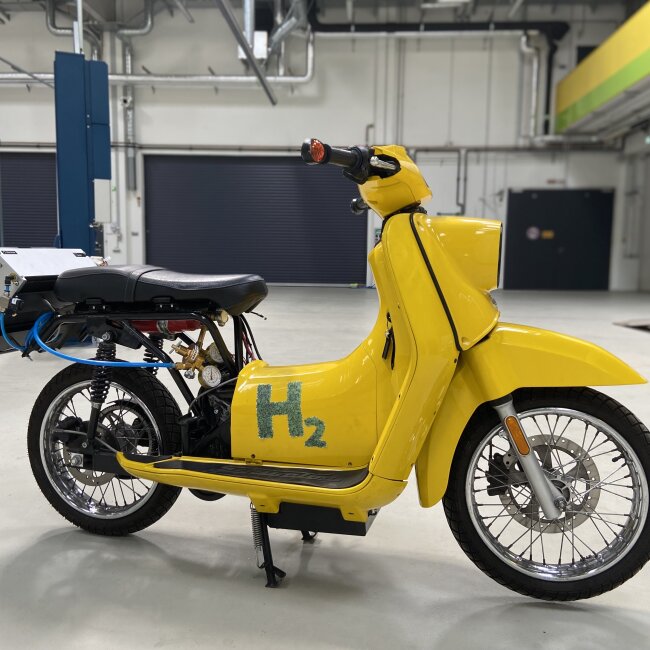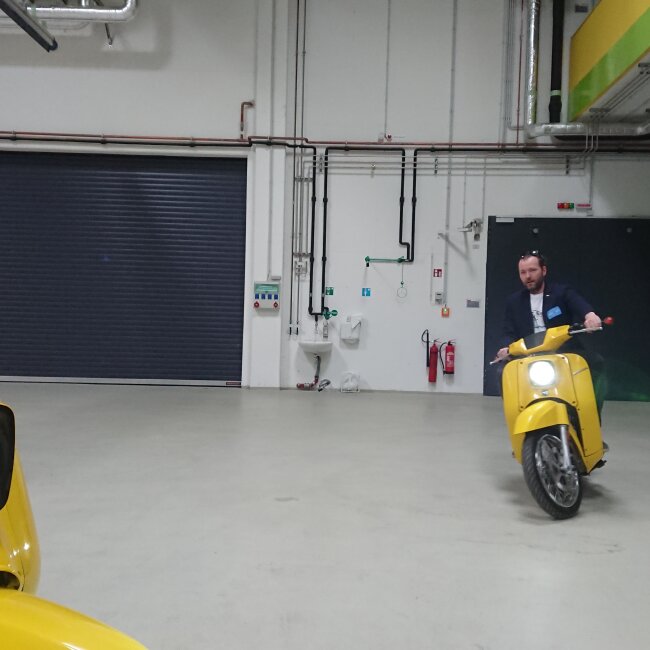German Scientists Create H2 Scooter with Horizon Fuel Cell
Horizon Fuel Cell Stacks can be used for a variety of purposes – one of the most popular being research activities. Universities, high schools and research institutes across the world deploy our systems to discover more about the technology behind this equipment using cutting-edge research techniques.
As part of our series investigating the exciting and innovative things customers do with their fuel cell stacks – we’ve spoken to Michael Heere and his PhD students Lennart Kösters and Arne Schweinitz from Braunschweig Technical University (#Technische Universität Braunschweig) about how they deployed a fuel cell in creating an ‘H2 Scooter’.
Known for extremely fast lead times, Horizon Educational was able to deliver Michael one 500W Fuel Cell Stack and one 3kW Fuel Cell Stack in only 3 days. ‘Getting a fuel cell stack quickly – especially in Europe – is not easy’, said Michael. ‘Often it can take many months for the equipment to be delivered, and with research budgets often time-limited, the importance of receiving this equipment quickly can be vital’.
The local fuel cell team created the H2 Scooter in order to demonstrate the technology to pupils in local schools, promoting women and girls in STEM. As mechanical engineering is a largely male-dominated field, the research group invited girls from local schools to see how the technology works first-hand.
So, Lennart, why did you use a fuel cell stack to create an H2 Scooter?
Lennart Kösters: We’re actually building these systems for a day called ‘Girl’s Day’, where girls from the local area visit the research facility.
The idea behind this is that pupils have the possibility to see the working life of gender-dominated areas. Mechanical engineering is a heavily male-dominated field, so pupils, especially girls, came here to the Institute of Internal Combustion Engines and Fuel Cells, and we showed them what we do.
We made a fuel cell laboratory with them, which includes transparent fuel cell stacks from Horizon Educational. We built these fuel cell stacks together and used them to power a small electric motor. We showed them the different applications, how a small fuel cell can power a small motor and how a large fuel cell can power a large motor.


And why is an H2 Scooter the best platform to use for this educational purpose?
Arne Schweinitz: It’s a fun and exciting way of introducing students to the world of hydrogen and renewable energy engineering. There are a lot of tasks that are very interesting, but they require skills in electrical engineering but also mechanical engineering.
This scooter is a valuable platform, it's very approachable, you can just take it outside of the building, travel around the area we are based in, open it up only with 2 screws, and you’re already directly at the fuel cell stack. While from an industrial standpoint a scooter may not be the best application for fuel cells, for this educational purpose I think it's very valuable.
And when you’re not building an H2 Scooter to demonstrate the technology to the local community, what are your research areas?
Arne Schweinitz: I’m working on improving water management of fuel cells, and improving the diagnostic tools for water management. At the research institute we also have other areas of research – like metal hydrides and hydrogen storage, and fuel cell implementation in aircraft.
Lennart Kösters: My area of research focuses on the degradation of PEM fuel cells, specifically in the aviation context. How can we electrify aircrafts, what is the future of flying, how can we create models that have sufficient prognostics to predict things like voltage times and other key indicators?
Interested in learning more about fuel cell stacks? Check out our guide to DIY Fuel Cell Stacks

